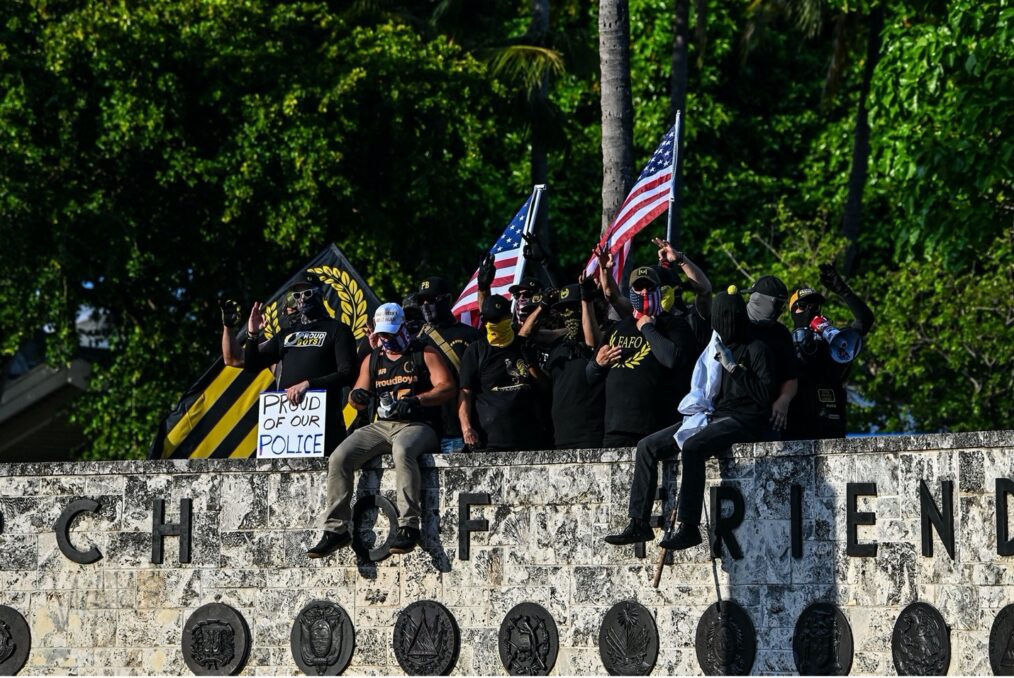On January 6th, 2021, white supremacists and militias breached the Capitol, deploying the use of violence and force. In light of this, government officials and researchers are working to identify the factors contributing to domestic terrorism in America.
Domestic Radicalization
In 2020, the Center for Strategic and International Studies (CSIS) recorded 110 domestic extremist attacks. Of those, two-thirds were from the far-right and about a quarter from the far-left. The remainder were driven by religious or “ethnonationalism” causes.
In the technological world we live in, social media provides the main clues experts use to learn about the radicalization process and when, where, and why this violence occurs. In 2016, social media played a role in the radicalization processes of nearly 90% of the extremists. The internet gives experts access to study extremist viewpoints and conspiracy theories that are being circulated. This is often the most vulnerable of people.
Deradicalization
However, it is not enough for people to disengage, people need to be deradicalized. Deradicalization is the process of making an individual become less radical in their political or religious beliefs. Disengagement didn’t necessarily reduce their level of radicalization, meaning that these individuals have stopped enacting extremist crimes but may still hold radical views. Most psychological counterterrorism strategies have been developed for international use for Islamist extremists. Thus, experts worry that these interventions might not translate to U.S.-based groups. Evidence has shown that using former group members is one of the best ways to encourage individuals to leave extremist groups. They provide social support and can reflect on the challenges and fears associated with leaving.
A recent study by Gina Ligon, the Director of National Counterterrorism Innovation, Technology, and Education Center at the Study of Terrorism and Responses to Terrorism (START) and her colleagues, found that one of the main reasons people disengage from extremist groups is for the same reason many people leave jobs or other organizations. They dislike their boss. They came to this conclusion after reviewing nearly 100 exit interviews with left-wing and right-wing domestic extremists. Ligon identified: “it wasn’t that they realized their beliefs were wrong, it was that they didn’t trust their leaders or were dissatisfied with the way the group was being managed.”
Combating Domestic Terrorism
Towards the end of the Trump administration, DHS was provided with around $500,000 for a project at American University to study the “growing threat of violent white supremacist extremist disinformation.” The program is aimed at preventing the spread of disinformation through what researchers call “attitudinal inoculation.” Attitudinal inoculation aims to give people who may be vulnerable to disinformation the skills to recognize it and argue against it. This can be comparable to how a vaccine builds antibodies to a virus before the body encounters it.
However, during the Trump administration, DHS officials were directed to use the term “violence prevention,” instead of “domestic terrorism.” Elizabeth Neumann, DHS’ Assistant Secretary for Counterterrorism and Threat Prevention states:
“We did expand domestic terrorism prevention under Trump. But, when it came to questions of how we could change the domestic terrorism statute to charge people more easily, there were no adults at the White House who were willing to go there. Nor was anyone willing to define the threat.”
The DHS under the Biden administration is very outspoken about naming and preventing domestic violent extremism. In response to the uptick, the Department of Homeland Security (DHS) is expanding research into violent extremism in the United States. The Biden Administration is expanding grants to the DHS’ Office of Targeted Violence and Terrorism Prevention. Similarly, the Homeland Security Department is looking to collaborate more closely with private social media companies. This includes Facebook and Twitter to spot indicators of potential violence.
However, there is a widespread belief within DHS that it should not be the federal government’s role to censor people or organizations, especially if the pressure is exerted by a Democratic administration on conservative media. The government will need to continue research and adapt to this goal of combating domestic terrorism in the United States. It has become very clear that there will not be a quick or easy solution to this growing issue.





